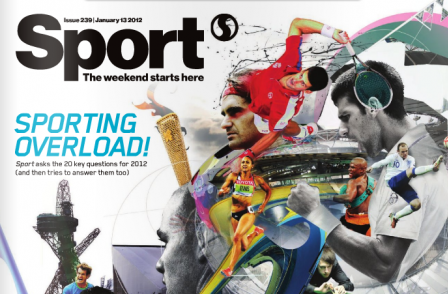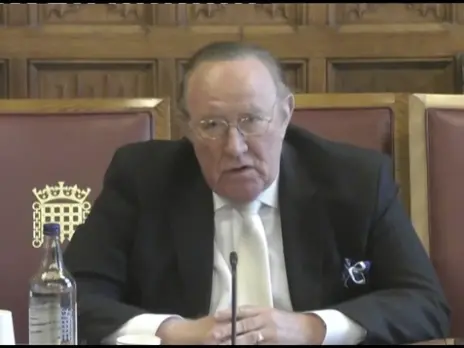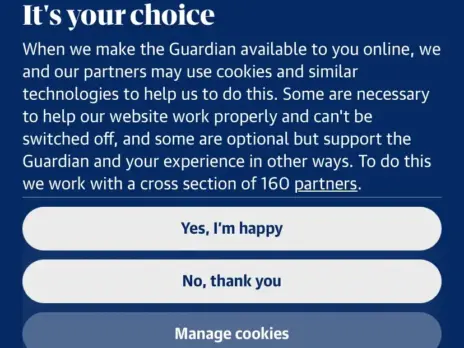
Editor-in-chief of Sport magazine Simon Caney has carved out a profitable niche for the free mid-market title. Earlier this Dominic Ponsford found out how you attract male readers with a sport-focused publication, build up a brand in a difficult climate and come back from the brink of disaster.
In the debate over the future of print journalism, it is often glibly assumed that tech-savvy under-30 men will never be persuaded to read a print publication.
You only have to look at the fate of the lads’ magazine market to see evidence for that. But it’s not true. They’ll read print very happily, they’re just reluctant to pay for it.
For proof, see the success of free weekly magazine for men Sport which, after a shaky start to say the least following its launch six years ago, has turned out to be one of the most profitable magazine launches of recent years.
So where did all go wrong? And then, later, how did it all go right?
Simon Caney was recruited by French company Sport Media and Strategy to launch Sport in the UK in March 2006. Caney had previously edited Golf Weekly and children’s football title Match! Sport had first launched as a free weekly in France in 2004.
After a solid start editorially (the-then biggest sports star in the world Tiger Woods was among the cover stars and interviewees in year one) the wheels came off commercially three years in – as the world economy began to go into meltdown.
Caney says: “We got to March 2009 when it started to fall apart mainly due to our French owner parent company. They’d got themselves in quite a hole in France and gone into administration.
“So we weren’t really in a position where we could just carry on under our own steam.
“We were virtually breaking even but not quite so it wouldn’t have stood up on its own. It was not an easy time to find an investor.”
.jpg)
The last issue was in early April of that year. Then Caney and his team were asked to continue coming to work, so that buyers wouldn’t be confronted with an empty office.
“We were all very nervous, as potential buyers were coming and going. Hopes were raised and then dashed. People were using the office as a base to bang out CVs, organise interviews: it was a very odd time. A group of journalists in a room with no publication to produce.”
Salvation came at the end of May with a successful bid from the owners of radio station Talksport – UTV.
The idea was that with Talksport’s listener figures (around 3m a week at last count) and Sport magazine’s 300,000 free weekly circulation, they could create a compelling case for advertisers. And despite the ongoing wider economic gloom that plan appears to have worked out.
After getting back on the streets in June 2009, Sport really started finding its feet in the summer of 2010 around the time of the South Africa football World Cup.
According to Caney, in both 2010 and 2011, Sport Magazine returned a profit of around £1m to UTV on turnover of around £4m.
So much for the death of print. Sport Magazine does not really have a website, other than hosting an archive of digital back issues. In November, it launched an iPad app, which includes extra slideshows, video and audio content. But in the main, it remains firmly a print on paper proposition funded by display advertising.
Handed out primarily at London’s main transport hubs, Sport magazine aims to deliver to advertisers a 30-minute read once a week.
Caney says: “We don’t necessarily want to be sitting around all week on the coffee table, as we’re not that sort of product. It’s designed to brighten up your Friday morning.”
Sport’s editorial formula mainly comprises previews of the sporting fixtures of the next week and big interviews.
“Since we launched, we’ve had pretty much every big-name sport star in the world that we would want to get sitting down for one-to- one interviews. We’ve had Tiger Woods, Roger Federer, pretty much every major footballer…”
That’s pretty impressive, but does that access come at a price?

“We work with brands. Tiger Woods would come through EA Sports… We’ve pretty good traction in this country with brands who know who we are.
“We work with them, we don’t sell our souls but we will run a branded picture and run a credit at the bottom. That’s how we operate.
“We see that more and more. Gone are the days when people could look down their noses at those kind of branded images. That’s the world in which we inhabit.
“We always say to the brands: 'Yes you can have your image on the cover if it’s good enough and it’s not naff.' There is some editorial control, and often we will say to them we can’t see that image on there because it’s ridiculously branded. Brands understand there’s a line for us to tread.”
What about copy approval? “There’s a degree of that. The default setting is to not offer copy approval but that is open for discussion. If it is an interview that we think we can probably live without, like if a second division sports star makes demands on copy approval, we are not that bothered. But we have given copy approval to David Beckham.
“So there is a conversation to have every time. Different sports are different. Football is the toughest one. We have agents involved in all that kind of thing whereas we find rugby and cricket a lot easier to work with.”
Perhaps surprisingly, considering that Caney is the editor of a magazine called Sport, he expresses some exasperation in dealing with the UK’s national game.
“They have entourages of people working for them. Football is a funny one, but we can’t ignore it. Out of 50 covers a year, 25 of them will be football.”
Adding later: “Much as I grumble about it and say it was better in the 1970s.”
So how is the future looking for Sport and its 12-strong editorial team? “January and February have been quite difficult. March has been good, and going forward, we are very confident it’s going to be a big year for us.”
It feels rather odd to be asking a magazine in 2012 whether or not they have considered launching a website. But with profits of £1m a year, you just can’t argue with Sport’s business model.
“We thought: ‘what do you do with a website?’ I don’t think magazines make much money online unless they are selling stuff… There’s e-commerce stuff. Motorcycle News makes money selling motorbikes.
“I don’t think there’s a massive commercial win at the moment.”
Sport works closely with the Talksport website, which Caney is editor-in-chief of, and this means taking a videographer on big interviews to provide extra online content. But having a proper Sport magazine website is not a priority.
“We’ll have a website one day because there will probably be a commercial need eventually. I suppose it’s one thing at a time.
“We took the view that there was a business rationale for launching an iPad app. That makes sense. Once we got that up and running, it’s a pretty low cost thing to maintain. But doing a website properly requires extra resources."

Email pged@pressgazette.co.uk to point out mistakes, provide story tips or send in a letter for publication on our "Letters Page" blog






